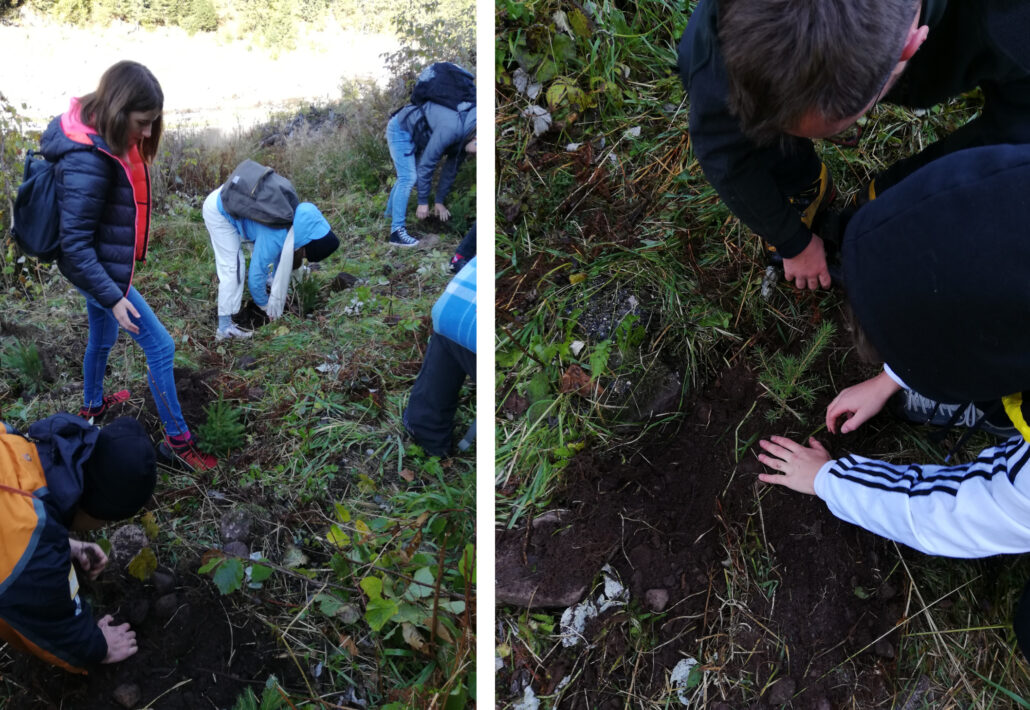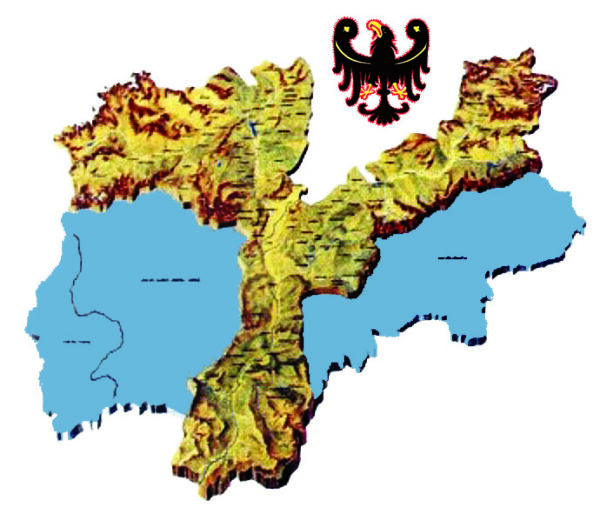December 16, 2021

The second grade students of the “LOS4” four-years teaching program at Martino Martini high school, Mezzolombardo (Trento), Italy, took part in a project called “Windstorm Vaia and Environmental Sustainability”. A two-years school initiative aimed at raising awareness about the impact of human activities and land use change on Alpine forests [1].
Windstorm Vaia was obviously the first topic to be tackled. The last week of a hot October 2018, a huge meteorological depression unleashed a storm of wind and rain that devastated the woods of three northern Italian regions. In Veneto, Lombardy and Trentino – South Tyrol, Vaia razed more than 40,000 hectares of marvelous Norway spruces, firs and larches. Yet, the number of damaged forest hectares is much greater: 12 million. Sadly, Vaia’s impact was not equally distributed. Approximately 26 % of the overall damage was recorded in the Fiemme valley, Trentino, where about 1.3 of the overall 4 million trees fell. Consequently, 50 forest paths and 145 roads, equivalent to 140 km, were destroyed [2].
These dramatic numbers and the shocking footages of Vaia’s impact bounced quickly from on media to the other saddening millions of people and triggering a strong wish to support the forest restoration in the hearts of plenty. Fundraising campaigns appeared on social media, bottom-up reforestation initiatives such as South Tyrol Plants were organized [3] and ethical start-ups such as VAIA Cube were born. The desire to join the restoration activities and contribute in a practical manner erupted also in local schools of Trentino. Not only did the Martino Martini students participate to seminars and educational workshops but also actively at a tree-planting campaign on October 16, 2021. “All 20 students and the 4 professors leading the project, planted a tree, either a larch or a spruce, in a forest site once devasted by Vaia and now designed for reforestation” affirmed Professor Alhena Piazzi.

Fig. 1: Students and professors of the “Windstorm Vaia and Environmental Sustainability” project actively planting larch and spruce seedlings in a forest site destroyed by Vaia (courtesy of Alhena Piazzi).
During the storm, the wind reached bewildering speeds of 180/190 km/h (maximum speed verified at Manghen pass) and about 60 cm of rain fell in only three days. That accounts to 60 % of the yearly rainfall rate (i.e., one meter of water). Luckily, the Fall and winter of 2018 were not harsh and allowed local forest rangers to take immediate action. Thanks to its secular heritage in forest management, the Fiemme valley forestry agency was on the forefront to remove the first trees obstructing the major roads and later to reestablish the entire road network [2].
Unremoved fallen trees can be infected by forest pests, such as the bark beetle (Ips typographus). The beetles can penetrate into the bark and feed on the meristem, the only living tissue of plants. Once it takes over the tree, it can then attack neighboring trees, and spread also to standing trees, thus augmenting the damage. This happened also after Vaia [2].
“Given their high vulnerability to bark beetles, the number of Norway spruce forests should be reduced and replaced by more diversified forest types” admitted forest ranger Ilario Cavada during the field trip. “Both Trentino’s forests and the 20,000 hectares of forests managed by the Fiemme valley forest agency house too many Norway spruces, which can live up to 500 years but are more exposed to dangerous forest infections and can therefore weaken the entire ecosystem” continued Cavada.
Integrating larches and spruces can be a optimum strategy against bark beetle infections and was the solution adopted by the Fiemme agency to restore the damaged areas. All available Italian forestry companies were first contacted, then also foreign companies because the workload to recover the fallen trees and plant the new ones is immense. Currently, the agency is growing about 600,000 seedlings of different species that will replace the fallen trees. To date, only 60 hectares of woods have been restored.
Forest conservation is perhaps the most known and appreciated form of environmental protection. Indeed, forests provide dozens of forest services but it is commonly said that they have a double purpose: they secure the soil hydrogeological stability, and they favor the biodiversity and the ecosystem.
Understanding the importance of forests and sustainable forest management was a key result of the project. It is hard to say, but “thanks” to Vaia, 20 students were given a down-to-earth learning experience about reforestation. They could broaden their knowledge and perspective on the impact of human activities on Alpine forests and all the living beings that depend on it.
Bibliography:
[1] Piazzi, A. (2021, December 6). Windstorm Vaia and Environmental Sustainability—Interview with the Martino Martini project leaders [Email].
[2] Cavada, I. (2021, October 16). Windstorm Vaia and Environmental Sustainability — Interview with the Fiemme Valley forest agency [Personal communication].
[3] Cologna, M. (2020, October 16). Let’s re plant South Tyrol! GreenMarked. https://greenmarked.it/ri-piantiamo-altoadige/
Cover photo: courtesy of Alhena Piazzi.
The article has been drafted by the 2nd grade students of the “LOS4” four-years teaching program at Martino Martini high school (Mezzolombardo – Trento, Italy) and edited by the GreenMarked Team.
This article is part of the project “Environmental Blogging Boost 4 Students”, aimed at increasing the spread of agroecology and sustainable water management in Trentino. The project is financed by the BIM Adige Water Catchments Consortium (grant approved by provision n. 100 of June 06, 2021).




